A plant-based diet concentrates on plant-based sources. A person eats mainly plant foods and minimizes animal-based products. Ultra-processed foods are minimized.
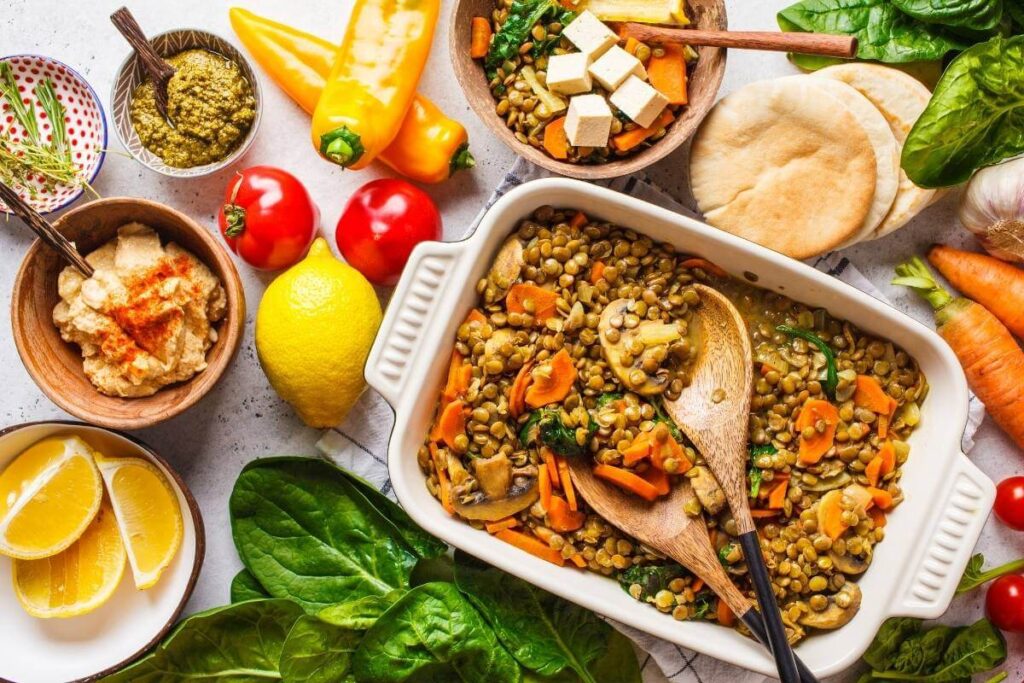
This blog post is mainly about following a whole foods plant-based diet.
Before we dive into this, here is a list of diets that can also be referred to as a plant-based diet:
- Flexitarian- Semi vegetarian. Eats mainly plants but does not require total elimination of animal products.
- Vegetarian- Doesn't eat red meat.
- Lacto-Ovo vegetarian- Eats dairy and eggs.
- Lacto vegetarian-Eats dairy.
- Ovo vegetarian-Eats eggs.
- Pescatarian- Eats some seafood.
- Mediterranean diet-Mainly plant-based with some animal products.
- Vegan-No animal products. Philosophy and lifestyle besides the diet.
Different Vegan diets
- Whole Foods Plant-Based-Mainly vegan foods, no oils, and no junk foods.
- The Starch Solution Diet- Is whole food plant-based diet concentrating mainly on starches.
- Raw vegan diet- Nothing cooked over 115 F.
- Nutritarian diet-Also, a whole food plant-based diet, concentrates on vegetables, fruits, legumes, nuts, and seeds.
- Fruitarian, 80/10/10- Fruits, leafy greens, nuts, and seeds.
- Junk food Vegan-Doesn't care about the health aspects and eats faux meat and cheeses, sugar and fats.
- SOS-Whole foods plant-based diet excluding sugar, oil, and salt.
- Low-carb vegan diet. Excludes all starchy vegetables, higher fat intake.
So, if you want to eat vegan or plant-based, you don't have to eat according to any particular sub-category. Further down is explained what foods are best to eat and what to avoid to be healthy following a plant-based diet. Then you can do some tweaks according to your goals. You might want to eat a specific way to lose weight or help with a specific health condition.
I tried to write a little of everything to get a little information on most parts of this diet—all green text links to studies or extra recourses. Of course, it is just a selection of some information to be found. I am not a medical expert, just a simple, practical nurse and health coach, so I encourage you to dig deeper by reading books and other sources.
What is WFPB?
WFPB is the short version of Whole Foods Plant-Based. It is a vegan diet that concentrates on real foods and limits heavily processed foods. In this diet, you minimize processed vegan products such as fake meats and cheeses, oils, white sugar, and refined grains.
This eating way focuses on vegetables, whole grains, legumes, seeds and nuts, fruits, and berries. This is a high fiber diet since you naturally get lots of fiber eating this way. This is the inspiration for this blog name, fiberfoodfactory. All recipes are plant-based, most of them also WFPB.
Difference between vegan and a plant-based diet
A person following a plant-based diet is not automatically vegan. Vegans exclude animal products from their whole life. WFPL people eat mostly vegan but don't eat any junk foods that vegans might eat and do not necessarily have the same ethical reasons to follow the diet.
People following a whole foods plant-based diet might even choose to eat honey, gelatin, or occasional other animal products. Vegans don't use leather, fur, wool, or silk and don't use products tested on animals. WFPL people often follow the diet because of health reasons, to lose weight or environmental reasons. They might choose to have animal-derived products in their home.
Vegan foods might not be suitable for people eating WFPB. These can be potato chips, sodas, vegan cheeses, Oreos, and other highly processed foods. Whole foods plant-based is focused on whole foods and cuts out all unhealthy highly processed foods.
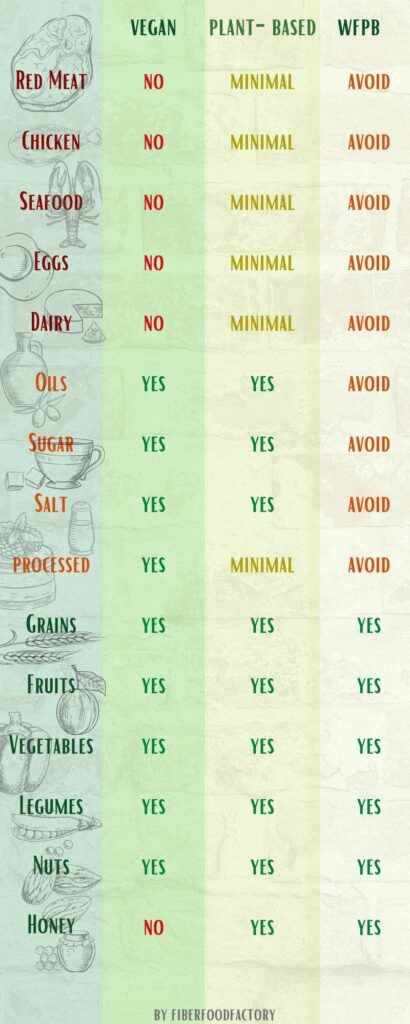
Difference between processed and ultra-processed foods?
Processing foods means all cooking, canning, freezing, packaging, and preparing of food. So, we can not say that whole food plant-based people would not eat any processed foods. Some processed foods you can eat won't affect your health negatively: like bread, tofu, and canned beans.
Highly processed or ultra-processed foods means the original product is altered quite much. These foods go through multiple processes and contain many added ingredients like preservatives and artificial ingredients. These impact our health because they do not have the same nutrient profile as whole foods and often have empty calories and low fiber content.
Ultra-processed foods are for example:
- Soft drinks
- Chips
- Chocolate
- Candy
- Ice-cream
- Breakfast cereals
- Packaged soups
- Fries
- Refined vegetable oils
- Pastries, cakes, and cookies
- White bread
- Margarine
Why are these processed foods bad for us?
Many People get 50 percent of their calories from processed foods, they are so simple and convenient to eat, and all supermarkets are packed with highly processed foods. It is tough to stay away from ultra-processed foods. They are made with high sodium, high fat, high sugar content, so they tickle our taste buds. Here are some reasons why you should try to minimize them:
Artificial ingredients
Food additives have been studied, and they are in general safe to consume, but we are all individuals, so some people might react to those additives or have allergies. These additives have been studied individually, but we don't know how they counteract together when mixed as a cocktail in foods. We don't also know how they affect us after years of consumption; they can affect our gut microbiome. Carrageenan, for example, can cause stomach problems for some, and it has been debated if it causes colon cancer or not.
I think all these are ok to consume in small quantities, but I sure don't want all my food to have chemicals.
Refined carbs
Carbs are good for us as long as they come from whole foods with fiber and vitamins. Simple carbohydrates like sugar, syrups, and white wheat are broken down quickly in the digestive system and spike the sugar levels. Studies show that high usage of refined carbs is associated with developing diseases like type 2 diabetes.
Low content of nutrients and fiber
Ultra processing often destroys the natural fiber content or reduces it significantly. Antioxidants, vitamins, and minerals are also lost. To replace the lack of these vitamins and minerals, they are added in a synthetic form. Your body, though, ingests these vitamins best in their natural state.
Is fiber so important? Natural plant foods contain much insoluble fiber that our bowel does not digest. This insoluble fiber is though fermented and digested by our gut bacteria! Healthy gut bacteria affect our overall health very much. If you don't feed your gut microbiome fiber, it starves, and the beneficial sorts die out.
Interested to learn more about fiber and gut bacteria? Then read the book Fiber Fueled by Will Bulsiewicz.
Trans fats
Ultra-processed foods often contain unhealthy fats because they are cheap to manufacture. Trans fats are associated with many negative health effects, such as high cholesterol levels.
Artificial trans fats are generated in hydrogenation; this means hydrogen is added to the oils to make them more solid, prolonging shelf life. The polyunsaturated fatty acids transform in this process to monounsaturated and saturated fatty acids. Here is a list of some foods that contain trans fats:
- Margarine
- Ready bought and packaged cakes, cookies, and pastries.
- Shortening
- Microwave popcorn
- Frozen pizza
- Many refrigerated doughs
- French fries
- Fried chicken
- Doughnuts
- Chips
- Cake frostings
Addictive food
Junk foods affect our brain. Sugar and fatty junk food light up the pleasure center in our brain. Ultra-processed foods are hazardous to children since they can become addicted to food at a young age; this can be hard to break when growing up.
All these rich, fatty, salty foods reward our taste buds and make us overeat. Overconsumption of calories then leads to obesity. I think we all have experienced this. Crispy, salty, fatty chips are easy to eat a whole bag of and get over 1000 calories extra, not even noticing it.
Health benefits of a whole foods plant-based diet.
Lowers risks, prevents, helps or even reverses:
- Heart disease
- Lung disease
- Digestive cancers
- Diabetes
- High blood pressure
- Liver disease
- Kidney disease
- Breast cancer
- Prostate cancer
Those are just some health benefits. People have found it helpful to PCOS, MS, Asthma, Allergies, Fibromyalgia, Rheumatoid Arthritis, IBS, Chrons disease, Alzheimer's, and more. You also get more energy, have easier to manage your weight, and eating WFPB reduces your environmental footprint. Let's dive into some diseases and how a plant-based diet is beneficial to those. Remember to check the list of books and doctors at the end of this post.
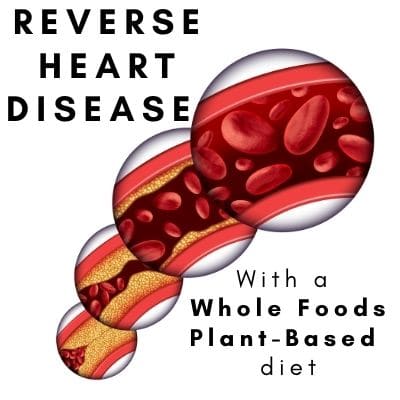
Heart disease
A plant-based diet based on whole foods and eliminates fats can significantly impact heart disease patients. Maybe you have heard of Dr. Michael Greger's grandmother, who was sentenced to death at 65, but after changing to a plant-based whole food diet, lived another 31 years!
Heart disease is plaques in the veins. Cholesterol builds up to the inner linings of the blood vessels. This happens slowly over time and narrows the path for blood flow. When the arteries become totally clogged, it leads to a heart attack.
Populations that have low cholesterol levels also don't have heart diseases as we do. They eat mainly plant foods like grains and vegetables—a really high fiber diet. The China Study is one interesting study- one you should also read about.
It is studied that the LDL cholesterol levels are important to keep low to reduce the risks of heart disease. Some though say that it is not the cholesterol itself that is the dangerous thing, it is just a repair system for injured arteries, and the key factor is to control systemic inflammation.
How can you reduce the inflammation? -Thru right diet, lifestyle, and exercise. People living in the five blue zones have low rates of heart disease. What do they eat? A mainly whole foods plant-based diet with minimal animal products. Another diet found to be beneficial is the Mediterranean diet that also concentrates on vegetables. Check this article to read more about inflammation and chronic diseases.
Many doctors have tried the whole foods plant-based diet as a treatment for heart disease. Nathan Pritkin, Dean Ornish, and Caldwell Esselstyn have had great success in this. Their patient's heart disease started to reverse, meaning the arteries began to clear up from the plaques. You can read about another case study HERE and HERE.
Of course, don't forget that you also need to make other lifestyle changes to reverse coronary artery disease.
For further reading: Dr Caldwell Esselstyns book Prevent and Reverse Heart Disease.
Endotoxins affect our arteries
What are endotoxins? They are bacterial toxins that trigger inflammation. These bacterial toxins are in some foods, even cooked ones; they do not become destroyed by cooking, by your stomach acids or digestive enzymes. What is the main food that contains endotoxins?-Meat. After a meal of meat, the endotoxins "travel" in saturated fat through the gut wall into our bloodstream, where they trigger inflammation. Watch this VIDEO to learn more.
By changing from a meat-rich diet to a WFPB people can get relief in a few weeks. Dr. Ornish reported a 91 percent reduction in heart attacks in his patients in a year. In the control group that was on a vegetarian diet, the angina pectoris attacks increased by 186 %. Read HERE more on the study, it is really interesting.
Breast cancer
Breast cancer is sure the most feared disease among women. It is fearful because you might not notice it. It is the most common form of cancer in women in most countries. Interestingly, breast cancer rates are lowest in East Asia and highest in countries with a high level of human development.
Dr. Greger writes in his book How Not to Die, " Achieving just three of the ten AICR recommendations-limiting alcohol, eating mostly plant foods, and maintaining a normal body weight-was associated with a 62 percent lower risk of breast cancer." Check the study here. World Cancer Report of 2014 states that only physical activity reduces cancer risk by 25-30%.
Chronic inflammation plays a key role in oxidative stress. Oxidative stress promotes cancer cell growth. How can you then lower inflammation and oxidative stress?- With exercise and the right diet.
A Plant-based diet effectively reduces inflammation in the body. A high fiber intake also reduces the risk for breast cancer significantly. So changing your pork chops to beans really makes a difference. An average woman in the US doesn't even eat 15 grams of fiber a day. The recommended amount is 25 grams. 25 grams is also on the lower end, and much more is recommended.
Here is one interesting video on how bad foods affect breast cancer. To get more information on how you can avoid and treat breast cancer, I really recommend reading the book How Not To Die.
Soy and breast cancer
One common question regarding breast cancer is about soy and soy products. Soy contains phytoestrogens, so people thought that these acted estrogen-like in the body and increased the risk of breast cancer. In studies, it has though been shown that plant phytoestrogens don't use the same receptors as your own estrogen.
Soy actually lowers breast cancer risk and can help with post-menopausal symptoms. Soy has also proved to be beneficial to type 2 diabetes patients.
Soy has many benefits, but consume it in moderation with some servings per day. Overconsumption of one food is never good. Diversify your diet to a variety of vegetables. Remember to eat your soy organic, GMO-free!
Type 2 Diabetes
So that you can understand how to treat this, you need to understand what causes it. In type 2 diabetes, your body does produce insulin, but the body becomes resistant to its effects. Your cells don't normally interact with insulin; they don't take in enough glucose. So when you eat food, the sugar doesn't get in your cells and remains in the bloodstream. This is dangerous since this extra sugar damages blood vessels in the whole body. Diabetes can lead to blindness, kidney failure, strokes, and nerve damage.
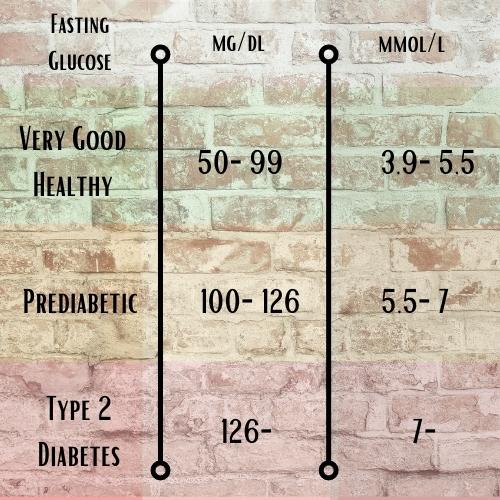
Diabetes websites say that the reasons are unknown why some get diabetes. However, some studies give indications that fat can be a culprit. "Fat from your own fat stores or the diet can build up in your muscle cells, where it can create toxic breakdown products and free radicals that block the insulin signaling process. No matter how much insulin you produce, your fat compromised muscle cells can´t effectively use it. "-writes Michael Greger, MD, in How Not to Die.
This is why losing weight helps in diabetes. Often this is used as an effective treatment in pre-diabetics. Your cells can get bloated with fat causing them to spill fat into the blood-stream that causes insulin blockage. If you lose weight, the "fat spilling" can stop.
Skipping fatty meals also helps. If you eat a fatty meal, it affects the absorption of glucose. The more fat you wear and eat, the more insulin resistance rises. You don't even have to be fat to get type 2 diabetes, even though it is a risk factor. If you eat a lower amount of fat in your diet, insulin works better.
The type of fat plays a significant role. Saturated fats, especially palmitate, found in animal products are not healthy for us. Palmitic acid is found in butter, cheese, milk, meat, and palm oil. I think you have heard that palm oil is not good for us, even though it is from a plant source. Sadly it is widely used in most ultra-processed products.
However, some fats are good for us and can even counteract some negatives from saturated fats. Nuts, olives, and avocados have healthy fats.
In history, patients have been "cured" from diabetes with fasting and a white rice, fruit, and sugar diet. Now great results are though achieved with a WFPB diet. It sure is a much better solution since you don't have to starve, but you can eat all you want of vegetables. It reduces the risk of developing diabetes and also improves blood sugar control.
I encourage you to read studies and people's experiences of how diet has helped their diabetes. One interesting one is about the HND diet(high nutrient density). It is based on vegetables, beans, fruits, and nuts, low in saturated fats and low in refined carbohydrates. 62% of the participants reached normal glycemic levels. They also reduced their blood pressure and cholesterol levels.

Why do keto diets work for diabetes?
So, you could say that a keto diet is actually the opposite of a plant-based diet. Most animal products are highly consumed. In this diet, carbohydrate intake is low, and fat intake is high. Because the body does not get glucose, the sugar levels often stay low. This does not, though, mean the diabetes is cured. If a person starts to eat carbs, the levels get higher again. Diabetes is only cured when your body and insulin works as it should, and the glucose from carbohydrates go to your cells and not stay in the blood-stream.
A plant-based diet is good for the planet
This way of eating truly affects your environmental footprint. You reduce greenhouse gas emissions, water consumption, and land use.
The production of animal products generates up to 78% of the greenhouse emissions. You can find that Marco Springmann´s study is very interesting.
So that a cow would get 1 kg of body weight, it needs to eat 10 kg of feed. Mostly they are fed with grains. This food needs land area, water, and fertilizer. One pound of beef also requires 1847 gallons of water. If we ate the crops instead of the meat, this would save a lot of recourses. Read more on the environmental effects in forks over knives website.
Changing our attitudes towards meat being only a festivity meal, like in the old days, would help our health and the planet. You don't have to give up animal products altogether, but shifting to a more flexitarian diet is a great start.
To even further make a difference you can buy local and seasonal produce.
What can you eat on a plant-based diet?
- Vegetables, leafy greens, cruciferous ones, marrows, roots, plant stems, and alliums.
- Starchy Vegetables, potatoes, sweet potatoes, squashes, beets, corn, taro, yams.
- Fruits, citruses, melons, stone fruits, berries.
- Whole grains, whole wheat, buckwheat, oats, barley, brown rice, rye, amaranth, quinoa, millet, teff.
- Legumes, beans, peas, peanuts, lentils, lupin.
- Nuts and seeds, almonds, pecans, pistachios, walnuts, hazelnuts, cashews, macadamia, brazil nut, peanut, flax-, chia-,sunflower, and pumpkin seeds.
- Healthy fats from whole sources; nuts, seeds, avocados, olives, grains, beans.
- Beverages; tea, infusions, coffee, sparkling water, kombucha, kefir water.
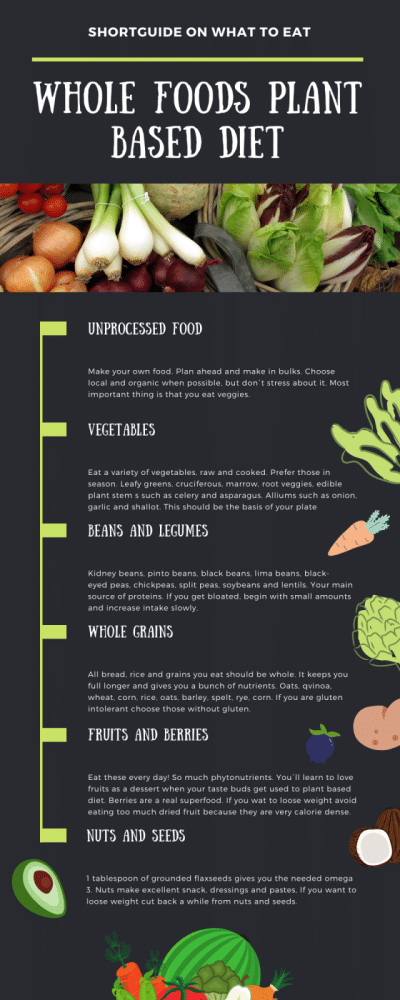
What you should not eat on the plant-based diet
- Meat
- Seafood
- Eggs
- Dairy
- Oils
- Sugar
- Added salt
- Fast food
- Refined grains
- Highly Processed foods, not even vegan foods.
Why not eat meat?
Meat causes inflammation in our body. Deli meat increases cancer risk by 29%.
Meat has dietary acid. All types of meat, beef, chicken, cheese, and eggs, have an acid load of 6,3-10 per 100/grams. Eating dietary acid makes our bones release alkaline materials to neutralize the acids. If you constantly eat high amounts of dietary acid, meat, this weakens your bones.
Methionine in meat metabolizes into homocysteine. Homocysteine has been associated as a risk factor for vascular diseases, dementia, and diabetes.
Meat is high in protein. Too much protein in our diet can weaken your bones. When we eat a lot of protein, calcium is excreted in the urine. This can increase the risk for kidney stones. Especially for people with kidney symptoms, it is essential not to eat too much meat.
Meat has cholesterol. We don´t need to get cholesterol from the diet since humans can produce it in our bodies. Extra cholesterol accumulates in our bodies and contributes to vascular disease.
Animal products also often have bacterias such as salmonella, yersinia, C. difficile ad E. coli. According to one study, over 90 percent of chicken meat can have bacteria that can make you sick.
Interestingly, Dr. Greger writes in his book How not to die that E.coli strains in chickens can be the culprit for women's urinary tract infections. It can actually be an animal to human disease. Even if you don't eat the meat, handling it in your kitchen can lead to intestinal colonization. (page 109 in the book)
Why not seafood?
Sardines are tainted with hexachlorobenzene. This is a toxic chemical and has associations with diabetes. Farmed salmon has a high amount of PCBs and other pesticides.
Fish and fish oil capsules have mercury. This concentrates on the fishes on top of the food chain like pike, bass, tuna, salmon, swordfish, herring, mackerel, and sardines. This is why I was taught at nutrition classes in school to eat fish a maximum of twice. Mercury poisoning is very severe and can damage the heart, kidneys, and nervous system. You can get memory loss and learning disabilities.
Fish also has fat, cholesterol, methionine and dietary acid.
It also matters health-wise if you eat farmed or wild-caught fish. Some fish farms feed cheap meals consisting of palm- and canola oils. This also alters the fishes' own nutritional value in the meat.
We have fished many fish stocks to almost extinction.
Often we are told to eat fish to get EPA and DHA, and fish is indeed a source. Though, most people's bodies can produce those from ALA (omega-3) we get from food. We can also eat this directly from the source like fish do, seaweed and algae. There are also algae-based supplements. Also, nuts and seeds have omega-3 fatty acids.
Why not dairy?
Cowmilk is perfect for those calves that need to grow very fast. Milk is full of growth hormones. This is not good for us humans, though, because we grow at a much slower pace. The increase in growth hormones, like IGF1, can promote the growth of cancers, especially breast, prostate, and colon cancers. Cheeses are concentrated milk, so they are high in these growth hormones.
Dairy proteins cause food allergies for many people. Lactose intolerance is also very common.
Milk consumption is associated with increased inflammation in the body and connected with autoimmune disorders like rheumatoid arthritis, asthma, and MS. Some people with those conditions can benefit from a milk-free diet. The research is not totally conclusive since some studies have found benefits of fermented milk products like yogurt with probiotics.
Some concerns are also raised about dairy and leukemia virus since most US cattle carry the virus. It can be speculated if infected milk can infect human cells like it did on chimpanzees. This, though, needs further investigation.
For further studying read Dr. Neal Barnards book The cheese Trap.
Why not oils?
Oils are empty calories. They have 9 calories in a gram. Carbs and protein have only 4. It is easy to get excess calories from fats, so this makes it harder to lose weight. Therefore, it is better to eat the fats from the source itself, so you also get fibers and phytonutrients.
If you, though, need to increase your weight you might want to consume some oils so you don´t have to bulk up so much foods.
Even vegetable oils, monounsaturated and polyunsaturated fats can increase atherosclerotic lesions. Vegetable oils impair blood circulation, so the oxygen level reduces. Especially for those with coronary artery disease, even unsaturated fats can have similar adverse effects as saturated ones.
What about Salt?
Salt makes our body carry more fluid. Some people notice this in swollen feet and fingers after eating some chips, for example. The extra fluid raises blood pressure. If you eat high amounts of salt for years, this can increase cardiovascular disease risk.
Overall our body is great at regulating the salt balance. Some people are though very sensitive to eating salt and instantly get very swollen.
Salt has antimicrobial functions, so it can negatively affect our gut microbiome. It reduces the production of short-chain fatty acids by our gut microbes. Short-chain fatty acids are mainly made in our gut when we eat fiber. SFCA:s, short-chain fatty acids have a significant impact on our health. They reduce inflammation in the body and can act as an antitumorigenic and antimicrobial substance.
- Institute of Medicine recommends 1500 mg sodium per day.
- Dietary Guidelines for Americans recommend a maximum of 2300mg of sodium per day.
- In Finland, where I live, the maximum limit is 5000 mg a day.
I noticed when counting people's diet diaries that they get approximately 7000mg of sodium a day. It is challenging to be on the low sodium end if any processed foods are on the menu. Also, bread contains a lot of sodium. One high sodium product we use in my home is packaged firm smoked tofu; the salt content surprised me.
1000mg of salt contains approx 390mg of sodium. One teaspoon of salt is about 5grams and contains 2000mg of sodium.
Remember that vegetables have sodium naturally, so you might not even need to add any salt to your diet. To keep your sodium intake reasonable, don't eat processed foods and keep your bread intake low. Don´t add any salt in you food when cooking, use instead coconut aminos or miso paste or sprinkle some salt on your portion if you need it.
There is also difference in types of salt, some have more sodium, and some of them less. Food-grade table salt is one that has a very high sodium content 97%.
Why not eat processed foods?
Just a single fast-food meal can stiffen our arteries in hours. This inflammatory state lasts for several hours. Fake vegan foods' nutritional content is no better than animal products. They are often packed with saturated fats and additives. Dr. McDougall writes that the isolated soy protein increases calcium loss as much as animal protein does, increasing the risk for osteoporosis and kidney stones.
Can you eat honey on the plant based diet?
Vegans choose not to eat honey, since it is made by animals. Some people following a plant-based diet choose to include honey to their diet. Honey has many health benefits, but is best to use sparingly due to high calorie content and rapid glucose release.
Why are you hungry on a plant-based diet?
You might feel hungry the first days of switching to a plant-based diet. Then you should eat until you feel satisfied, your body will adjust to the change. If you after some days still feel hunger then you can check these things:
Enough calories? Are you eating enough? Vegetables have fewer calories than animal products per pound, so you need to bulk up the mass you are eating or eat more high-calorie density foods like nuts and avocados.
Enough fiber? Fiber keeps you feeling full for a longer time. Check this list of high-fiber foods to bulk up with.
Enough Starches? Eat more starches; potatoes, sweet potatoes, whole grains, and legumes to feel full longer. My favorite breakfast is a no oil oatmeal granola; this keeps me full for 4-6 hours in the morning. Potatoes are also a better option than pasta to keep you satiated for a longer time.
How long does it take to not have cravings?
It will take two weeks for your taste buds to change and for you to feel like you can enjoy plant foods instead of those fatty, salty, and sugary foods. If you though keep enjoying them occasionally, the cravings might stick.
If you are having a really hard time with cravings for junk food, then it might be best to clean your home totally from anything unhealthy.
With time you will find enjoyment in plants only and crave for strawberries, grapes and kale chips instead.
Things you can eat instead of junk stuff during your transition period:
- Air fried potato or sweet potato chips.
- Kale chips, made in the oven or air fryer.
- Air-popped popcorn
- Dates and other dried fruits
- Roasted cashew nuts
- Carrot sticks with hummus or cashew dip
- Avocado chocolate mousse
- Chickpea-peanut butter cookie dough
How to get enough protein on a plant-based diet?
All plants contain protein. It is hard to get protein deficient if you eat enough calories. Protein deficiency disease is called kwashiorkor. Have you ever heard of this? -yeah, I thought so... Only kids in undeveloped countries with famine have this, then they are overall undernourished with everything. You really don't need to worry about protein if you eat a variety of foods.
How much protein do we need?
Professor Chittendon was a pioneer in protein studies. He wrote the book Physiological Economy in Nutrition. He concluded that 35-50 grams of protein a day is enough to maintain health and physical fitness. The recommendation in most countries is 0,8 grams/ bodyweight kilogram or 0,35grams/pound. A person who weighs 70 kilograms, 154 pounds, thrives on 56 grams of protein a day.
56 grams of protein can be achieved even with simple foods:
- 1600 calories of pasta
- 2500 calories of cooked potatoes
- 760 calories of cooked red lentils
- 1570 calories of steel-cut oats
Complete and incomplete protein
You might have heard of complete and incomplete protein. This means that one source of food has all the necessary amino acids. Meat and animal products are such. Plant protein often has so-called incomplete protein, which means that not all amino acids are present in one vegetable.
You still don´t need to worry about complete and incomplete proteins. Your body takes all amino acids it needs from the variety of foods you eat. You don't need to eat all the necessary amino acids at the same meal. It is enough if you eat it on the same day. If you, for some reason, want to eat a complete protein source at one meal, then these products have a complete amino acid profile:
- Soybean, tofu, tempeh, edamame
- Potato
- Quinoa
- Amaranth
- Buckwheat
- Hemp seeds
- Chia seeds
- Nutritional yeast
- Ezekiel bread
- Mycoprotein
- Combining rice with beans
- Combining wheat and chickpeas like pita and hummus.
- Seitan, if it has chickpea flour added.
Richest sources of plant proteins
- Beans
- Lentils
- Peas
- Tofu
- Tempeh
- Seitan
- Seeds
- Nuts
- Tahini
- Quinoa
- Hummus
- Rice
- Pasta
- Oatmeal
- Soba Noodles(buckwheat)
- Hemp seeds
What if you are allergic to beans and legumes?
You can get adequate protein even if you can not for a reason or other eat beans and legumes. Here is a list of other protein sources and protein content.
| SOURCE | PROTEIN IN GRAMS PER 500 CALORIES |
| Boiled buckwheat groats (385g) | 20 |
| Cooked Quinoa (360g) | 17 |
| Hemp seeds, peeled (80g) | 27 |
| Broccoli (1500g) | 58 |
| Brussel sprouts (1200g) | 43 |
| Seitan, without the chickpea flour(135g) | 100 |
| Teff, uncooked (138g) | 18,3 |
| Amaranth, uncooked (135g) | 18,4 |
| Sprouted wheat (233g) | 18,9 |
| Rolled oats (130g) | 17,7 |
| Brown cooked rice (480g) | 10 |
| Chia Seeds (110g) | 25 |
| Peanuts (90g) | 23 |
| Sunflower seeds, peeled (81g) | 19,7 |
| Oven-baked sweet potato (570g) | 9,7 |
| Boiled peeled potato (660g) | 12,4 |
| Boiled pasta (470g) | 20,8 |
Often protein is per serving size, but I wanted to give a different list for you based on the calories/protein ratio. This makes you realize that a normal lunch calorie portion can give quite a lot of protein. When you combine these foods to a 500-600 calorie average meal, it is not so hard to get 20 g/protein on a meal.
One example of a weight loss meal of 440 calories is 200 grams boiled broccoli, 300 grams cooked pasta with tomato sauce, and a salad with mixed veggies of 200 grams. This portion gives you 20 grams of protein!
These are just some foods that you can eat, but all vegetables and grains have protein, some more and some less. It can be beneficial to keep a food journal for some days to keep track of your protein intake, especially if you are an athlete if you worry about this matter.
Often people with IBS, feel that they can not eat beans because they get cramps in their stomach, but the key is to start with really low portions. Start with one bean, next day 2 and so on. Often with time when the gut microbiome changes due to a plant based diet, the tolerance for legumes increases.
How to get all nutrients on a plant-based diet?
You quite easily get almost everything you need if you eat versatile and enough calories—some vitamins you have to supplement, though, like B12. To some help can be a list of foods you need to eat every day that you keep on your fridge door, as a reminder. One good list is the daily dozen; it is also an app you can download to your mobile phone.
Here is my to remember to eat everyday list:
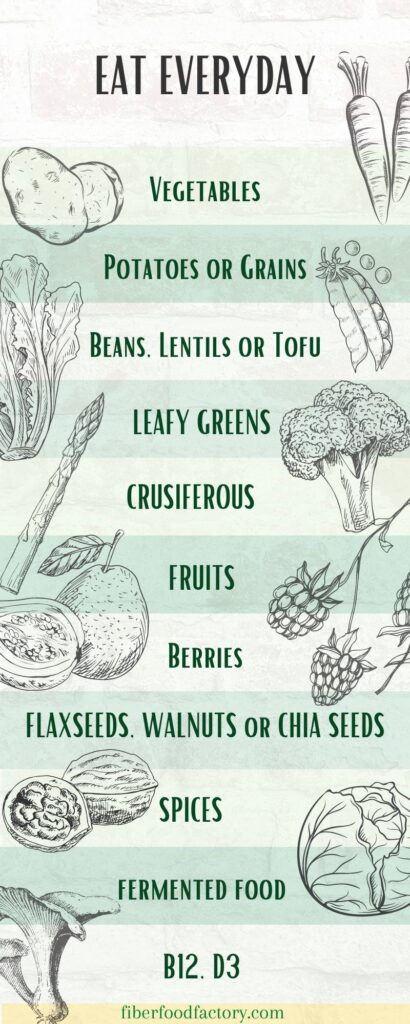
I recommend analyzing your diet. Keep a food journal for 3-4 days and see if you get all you need from the diet. Then make adjustments if needed. You can pay a nutrition coach to do this, or just make it on your own. As a help, you can use a food diary program like chronometer or one tool I like to use is fineli.fi and the food journal there, just remember to put in the background data and choose English as your language.
Best is if you can have blood samples taken and check your vitamin and omega levels this way. It is an investment, but this way, you can accurately correct your diet and take the supplements you really need. We are all individuals, and foods are bioavailable in different ways for each of us. A leaky gut can also affect the absorption of nutrients.
What supplements do you need to take?
As a vegan, the most important supplement is the B12-vitamin. You don't have to worry about it right away, an average person's supplies last for some months, but this you have to remember to buy and use every week.
B12 becomes even more important the older you get. Over 65, and your body does not absorb it as well. Some fermented foods have B12, and also, many plant milk and nutritional yeast are fortified with that. Some countries don't fortify those products, so then it is good to take a supplement.
Vitamin D. If you don't get sun all year round or don't spend time outside, you need to eat D- vitamin. Especially during the winter months. The recommended amount starts at 10 micrograms a day. Some countries have higher recommendations. Some foods contain vitamin D, like chanterelles.
Other vitamins you need to pay attention to, some vegans don't get enough of :
| Vitamin | Recommended daily amount | Source |
| Calcium | 800 mg/ 1200mg US recommedation | Tofu, fortified plant milk, leafy greens, oranges, tahini, beans, peas, lentils, almonds, amaranth, teff |
| Iron | 15mg | Legumes, oats, leafy greens, whole grains, lentils, nuts and seeds, chickpeas, potatoes |
| Iodine | 150mg | Seaweeds, iozided salt |
| Omega-3 | 250-500mg | Flax seeds, chia seeds, walnuts, hemp seeds |
So, what supplements do we eat in our family? B12, of course. Vitamin D, especially during the winter, and sometimes we take a multivitamin. When I analyzed my food journal, I noticed I could not get enough Selenium, Iodine, and vitamin A.
Finland's soil is low in selenium, so I need to supplement or find grains from another country's origin. Vitamin A is stored in the body, so even if I did not get it for some days, it is not a problem. Iodine is found in seaweed and fortified salt, but my diet was low on both. Days I do eat seaweed, I don't take any extra Iodine.
How to lose weight on a plant-based diet?
To lose weight, you need to be in a calorie deficit. It is relatively easy to do that on a plant-based diet without counting calories; this is why calorie counting is not often recommended. Also, when you eat whole foods, they absorb differently in your body. This usually means you can eat slightly more than on a traditional eat that you want but count the calories diet.
You can get to a calorie deficit also by increasing your physical activity. If you take a 1-hour walk every day, this burns 250-350 calories.
Do some weight training to increase muscle mass. Muscles burn more calories than fat.
To find the best way to lose weight for you on a plant-based diet, you need to know what type of an eater you are.
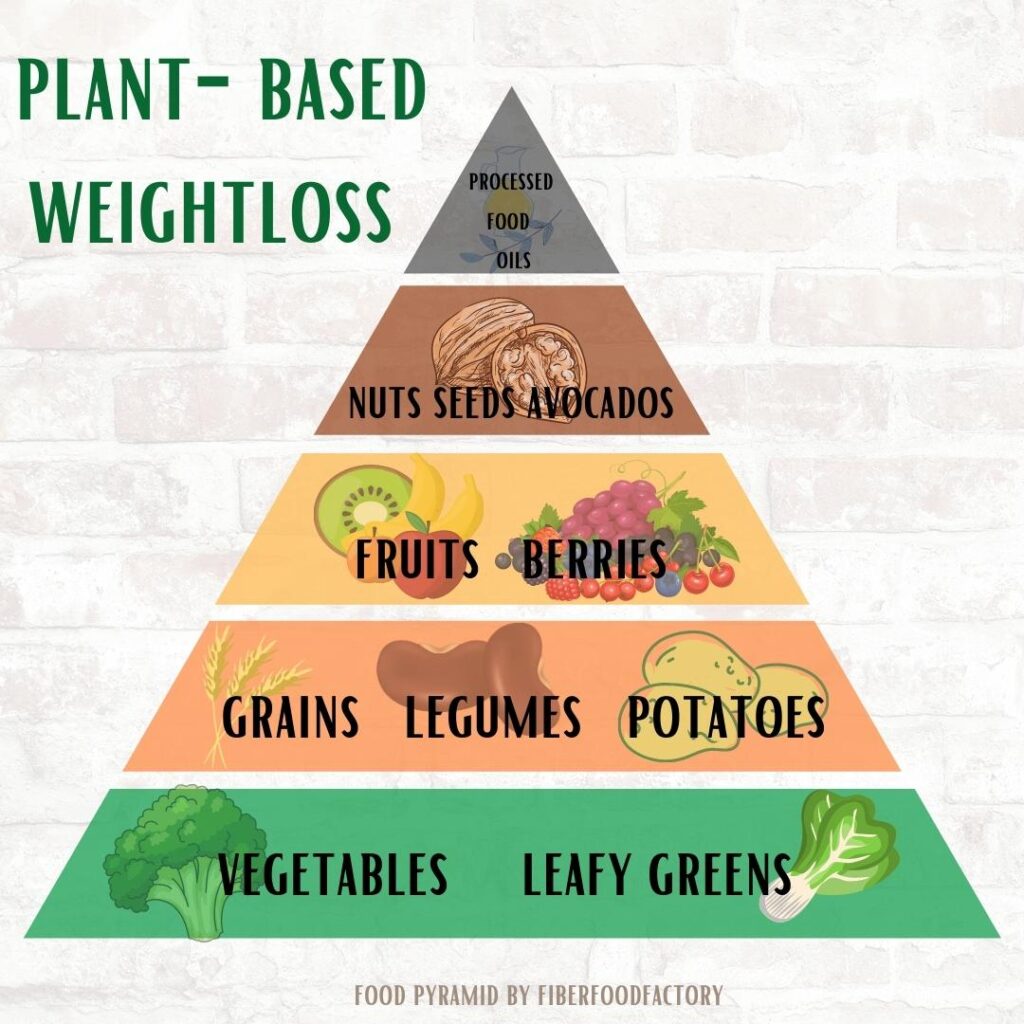
If you want to eat a lot of food and not feel hungry. Then concentrate on starches and vegetables. The Starch Solution approach by McDougall can be right for you. You can practically eat all you want. I wrote a blog post about this, so go check it out. This cuts out all fatty foods like nuts and avocados. Eat 50/50 plates with half veggies and half starches at every meal.
Suppose you love nuts and avocados and can´t live without them. These are more calorically dense, you can eat those, but you need to watch your portion sizes. You can cut some carbohydrates like pasta and bread and eat a salad instead and snack on some nuts.
Are you a busy bee who doesn't have time to cook and snacks all the time? Then meal prepping is important. Reserve a couple of hours on Sundays to make a big batch of food, freeze some of it. Cut up salad ingredients to boxes. They will hold for up to 3 days. This saves you time in the week if you don't have time to cook. Carry with you always some plant-based foods, so you don't take that unhealthy bun at the office. I carry bananas or other fruit in my bag when I have those busy days I don't have time to eat proper lunch.
Are you a culinarian who enjoys making recipes and eating different foods? Calorie counting can do the trick for you. Also, change one meal for a big salad or soup and have the other dinner as your culinarian experience. Increase physical activity. Some fasting can also be efficient. In Sweden, it is popular with a 5:2 diet. This allows you to eat all you want on 5 days of the week and 500 calories on 2 days of the week.
Chocoholic, sugar craver. You really need to clear all your cupboards at home from non-compliant foods. Eat a lot of fruits, this helps with your sweet tooth. Make chocolaty desserts from chocolate powder instead. An avocado-chocolate mousse can help with chocolate craving. Dates are super sweet and much better than candy.
Chips muncher. Not all are drawn to sweets and chocolate but like those salty, savory things like potato chips, popcorn, salted peanuts. My best tip is to buy an air-fryer and make your oil-free chips in that. Kale chips can be surprisingly good also. Carrot sticks with dip are also something crunchy to snack on. Popcorn is great if you make it yourself.
To lose weight, you need to learn about calorie density in foods. Cut out all oils if you want to lose weight. It is just empty calories. One gram of fat has 9 calories! By not pouring that tablespoon of olive oil on your salad, you save 130 calories; that is, half an hour walk!
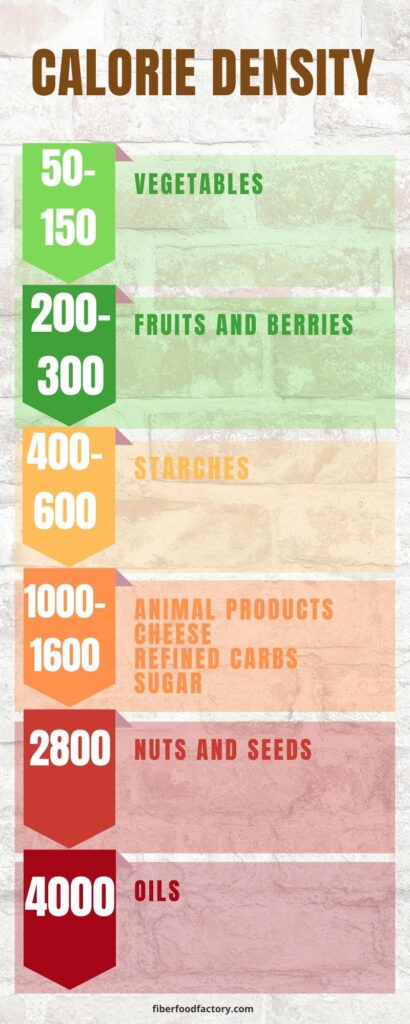
If you are not losing weight on a plant-based diet, I suggest you count your calorie need. Use, for example, this calculator. Then keep a food diary for 3-4 days. I think you will see that you are consuming more calories than burning.
How much weight can you lose in a month on a plant-based diet?
The average weight loss is one pound a week. People who I asked lost 3-11 pounds in one month, so it is very individual. The more weight you have to lose, the more pounds are often shed at the beginning.
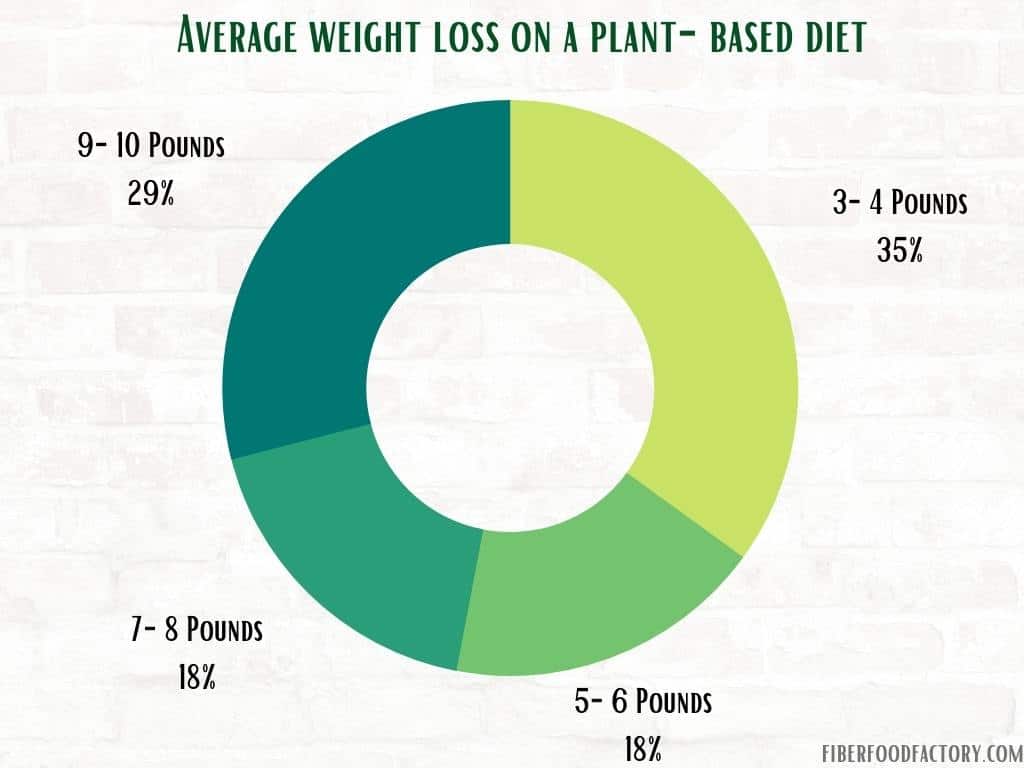
The most common is a weight loss of 3-4 pounds a month. Those who have a lot of overweight can have a more rapid weight loss and lose 10 pounds in one month on average. Remember, though, that weight loss is not a linear curve.
More close you are to your ideal weight, the harder it is to lose those last extra pounds. Remember that not only the weight itself matters but the fat percentage of your body. It is more important to check that the fat percentage is decreasing. A scale that measures fat and muscle mass can be a good investment.
Is a plant-based diet good for athletes?
A plant-based diet is great for athletes since it reduces recovery time for muscles. It helps blood viscosity and flexibility in arteries. This results to better blood flow and more oxygen in the muscles.
If you eat a plant-based diet, you get more antioxidants, which help neutralize free radicals. Free radicals lead to muscle fatigue, reduced athletic performance, and bad recovery. Tough workouts break muscle fiber, and this causes inflammation. A plant-based diet is anti-inflammatory. Many who eat a WFPB diet also have easier to keep their body fat composition low.
Some famous vegan athletes you might want to follow if you are interested in this question.
- Brendan Brazier
- Mac Danzig
- Rich Roll
- Scott Jurek
- Michael Arnstein
- Patrik Baboumian
- Venus Williams
- Lewis Hamilton
- Tony Gonzales
- Alex Morgan
- And many more...
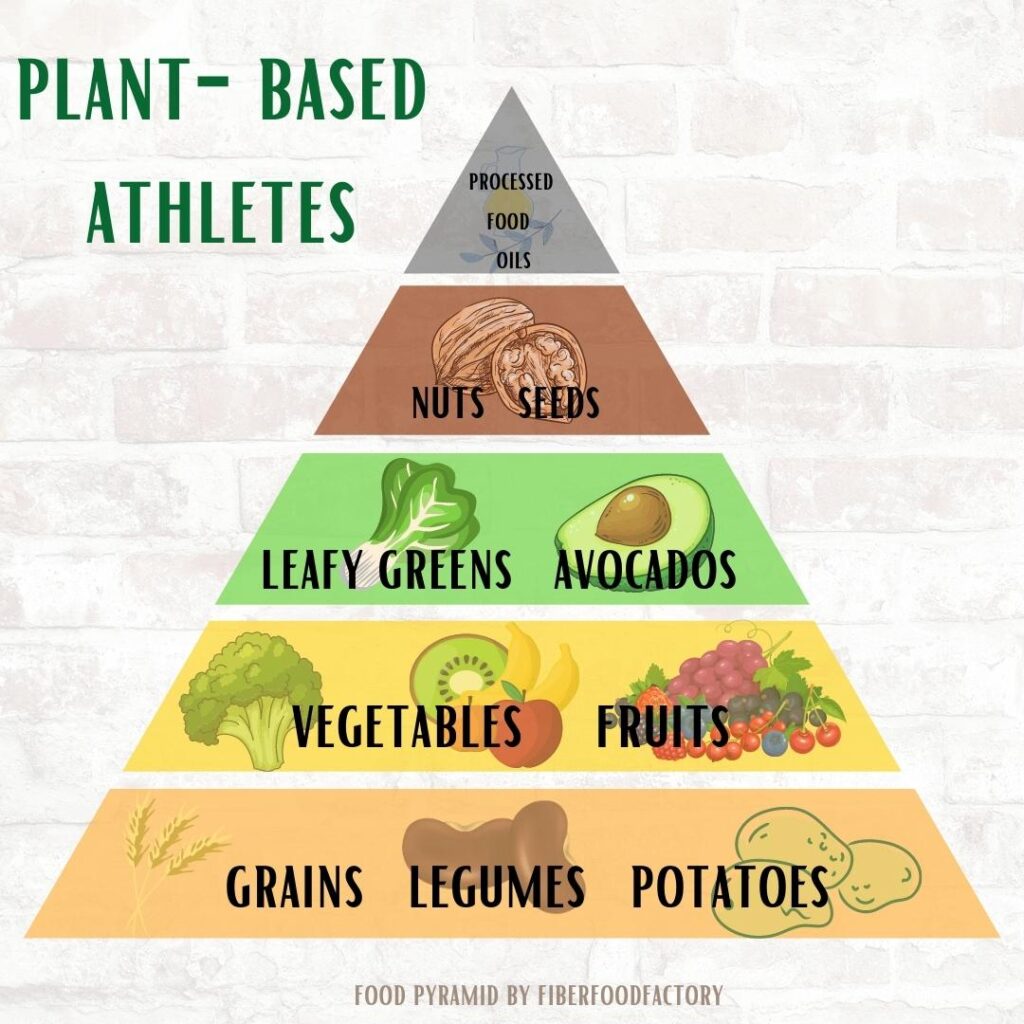
Negatives of a plant-based diet
- Can be high in oxalates
- Changing eating habits can feel hard
- You need to prepare food yourself
- Can feel restrictive when eating out
- Deficient in vitamin B-12
- Can cause more gas
What to do with flatulence
So, I think a plant-based diet does not have any other negatives, but excess gassiness can feel really hard for some when changing their diet. What causes this? Your gut microbiome probably is not used to the higher fiber content. Fiber ferments in the bowel by bacteria, and this causes gas. It is not dangerous. When your gut heals, and your gut microbiome diversifies, the flatulence will decrease.
There are also some foods that cause gas for some people, these are the most common:
- Cruciferous vegetables like broccoli and cabbages
- Onions and garlic
- Beans
- Lentils
- Peas
- Fructose that is is wheat.
If you have IBS, a plant-based diet can be perfect for you, but it takes time to get better. When changing to a plant-based diet and having irritable bowel syndrome, you need to pay attention to FODMAPS and don't eat many fermentable foods initially; increase the amount really slowly. IBS people want to keep track of the amount in fructans, galacto-oligosaccharides, sugar alcohols, fructose, and lactose.
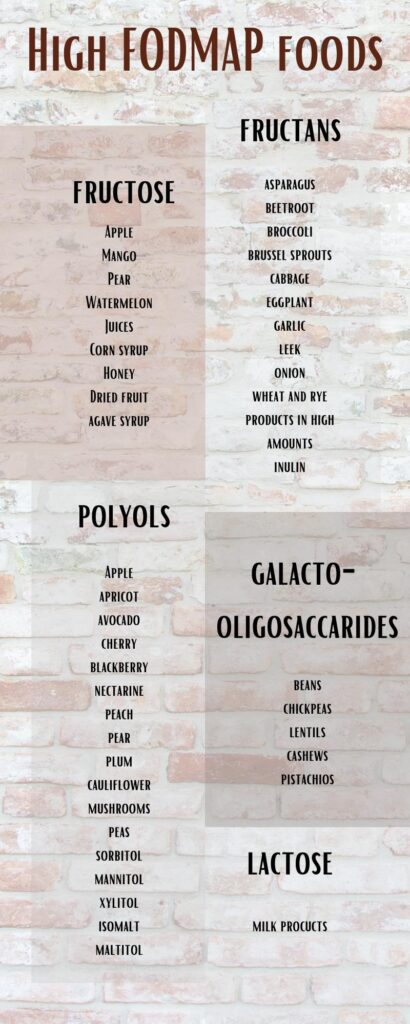
Should you worry about oxalates?
A too high oxalate intake can lead to kidney stones. So yes, it is good not to overconsume high oxalate foods. Your body naturally gets rid of oxalates, but some people are "hyper absorbers." Calcium helps reduce the amount of oxalate being absorbed by your body. Eat calcium-rich foods when you consume high oxalate foods.
Some high oxalate foods:
- Rhubarb
- Dark Chocolate
- Spinach
- Beetroots
Tips for prepping and cooking
Meal prep
I find it easiest and most time-efficient in a hectic schedule to meal prep twice a week. If you don't meal prep, it is easy to grab something less healthy, and more likely, you find it hard to stick to plant-based eating. You don't have to make all your meals ready.
It is easiest to have a cooked starch ready as a base of the meal; then, it is easy to make variations. For example, on Sunday evening, I cook a whole pot of brown rice and chop some salad; lettuce, tomatoes, cucumber, and other veggies separate in storage containers. From the cooked rice, it is easy to make different meals at the beginning of the week. I also make some bread spreads and salad sauce. All this takes about an hour.
From the rice I have cooked I make different meals, like Salad with rice and chickpeas. Fried Thai spiced rice with veggies and tofu. Tortillas filled with rice, beans, and veggies with Mexican taco seasoning. Rice porridge-like breakfast with cinnamon, cardamom, and plant milk and fruits. Indian curry with rice.
Then on Wednesday, I might meal prep again and make a big batch of mashed potatoes, this can then be eaten as a vegan shepherds pie, with plant-based "meatballs", veggies, or with tofu "fish sticks".
On the weekend it might be fun to cook something fancier or eat out. We often like to make vegan pizza, tacos, or hamburgers.
Next week we might use quinoa and pasta as a starch base for lunches an dinners.
How to cook beans?
Cooking your own beans saves money. My best tip is to buy an instant pot, a super-easy way to cook beans; it makes it a lot quicker.
Cook a big batch once or twice a week and make different beans every time, so you get variation in your diet. You can also freeze your beans and take what you need from the freezer.
- Check your beans and remove all discolored ones.
- Rinse the beans before soaking
- Overnight soak: Cover your beans with cold water. Let soak for 8 hours in the fridge.
- Hot soak: Cover your beans with water, boil for 3 minutes, remove from heat and let soak for 4 hours.
- Quick soaking: Cover your beans in a pot with water. Bring to a boil, turn off the heat and let them sit an hour. Drain the water, put in new freshwater, and then cook the beans until tender.
- Drain and rinse your beans after soaking.
If you have soaked your beans and notice you don't have the time to cook them, then just change the water and store in the refrigerator until you have the time, change the water every day.
Did your beans sprout a little before cooking? Don't worry; many people actually sprout all beans, grains, and legumes before eating; this makes them more bioavailable and tummy-friendly.
Here is a table of cooking time for beans and legumes for you. Times are approximate and can vary on how much you are cooking and on your heat. Primarily follow the instructions on the bean package for cooking time.
| BEAN | COOKING TIME in minutes |
| Black | 60-90 |
| Kidney | 60-90 |
| Navy | 90-120 |
| Pinto | 90-120 |
| Adzuki | 50-60 |
| Anasazi | 60 |
| Cannellini | 50-60 |
| Chickpeas | 60-120 |
| Fava | 50-60 |
| Lima | 50-60 |
| Mung | 50-60 |
| Green split peas | 45 |
| Green lentils | 40-50 |
| Brown lentils | 40-50 |
| Red lentils | 10-20 |
| Black lentils, beluga | 20 |
In a pressure cooker the cooking times of beans are 20-40 minutes.
How to prepare and saute food without oil?
You might wonder how you can make any food on a frying pan. So did I in the beginning. But you rarely need any oil in cooking. It is, though, convenient to have a non-stick pan. When a recipe calls for sauteing, add enough water or vegetable stock. This prevents the food from sticking to the pan.
I only use some oil when making waffles, because otherwise the batter sticks to the waffle iron.
A cheap way of eating
A plant-based diet can be a very cheap way of eating. You can reduce your family's food bills by hundreds of dollars if you want to. Starches and legumes as staple foods are cheap. Cheap starches are, for example, oats, potatoes, sweet potatoes, pasta, rice, and other root vegetables. Buy your beans in bulks and cook them yourself; this way, you will save a lot by not buying canned beans.
Plant milk is another thing you can save a lot on. Where I live, plant milk costs 2-3 dollars for one liter. If you make oat milk yourself, the cost is only some cents. Of our 400 euros we spend on food, 17 euros is just on plant-milks. 10 euros on coffee and 20 euros on alcohol. So only by cutting out those we could save 50 euros.
I do know couples who can manage with just 200 euros a month on groceries. So, anything is possible if you plan your meals.
Tips on how to save on your food budget
- Cook your own beans
- Grow your own sprouts
- Buy rice and potatoes in bulk.
- Buy your tofu in foreign shops or make your own.
- Make your own tempeh
- Make your own plant milk.
- Grow your own herbs
- Grow some potatoes in the backyard or balcony
- Change alcohol to self-made kombucha.
- Change coffee for tea.
- Don't eat out
- Minimize on nuts and avocados
- Buy produce in season.
On the other hand, it can also be an expensive way of eating, especially if you eat out a lot. Often a plate of salad is much more pricy than a hamburger. This is why it is best to plan and make lunchboxes. Nuts, seeds, avocados, and exotic foods are also pricy.
What should you have in your pantry
Here is a list what I think you should have in your pantry when you want to begin your plant based lifestyle. This is about what we have in our cupboards and you can surely make a lot of recipes with these ingredients. Sure you can have a lot more, but these are necessities.
LEGUMES
- Different beans dry or canned
- Lentils
- Chickpeas
- Peas
GRAINS and FLOURS
- Wild rice
- Whole grain brown rice
- Basmati rice
- Barley
- Buckwheat
- Bulgur
- Couscous
- Quinoa
- Oat groats
- Steel-cut oats
- Oat flour
- Wholegrain wheat flour
- White wheat flour
- Rye flour
- Almond flour
- Chickpea flour
- Variation of pasta
- Wholegrain wheat noodles
- Rice noodles
- Soba noodles
- Cacao powder
- Corn starch or potato starch
- Popcorn kernels
SPICES
- basil
- bay leaves
- thyme
- rosemary
- oregano
- marjoram
- parsley
- dill
- cardamom
- cinnamon
- nutmeg
- cloves
- pumpkin spice
- gingerbread spice
- cayenne
- hot smoked paprika
- sweet paprika
- chili flakes or powder
- cumin
- coriander
- garam masala
- curry powder
- garlic powder
- ginger
- turmeric
- lemon pepper
- mustard powder
- peppercorns, black, white, green, red
- smoked salt
- Himalayan salt
- vanilla extract
- baking powder
- baking soda
- vanilla powder
- bouillon cubes
PACKAGED
- Tortilla bread
- Nachos
- Wakame, sea kelp
- Nori sheets
- Rice paper sheets
- Tea and coffee
- Dark chocolate
FRUITS
- Buy a variety, what you consume in a week
NUTS and SEEDS
- Cashews
- Pecans
- Almonds
- Walnuts
- Pistachios
- Sesame seeds
- Pumpkin seeds
- Sunflower seeds
- Hemp hearts
- Flax seeds
- Chia seeds
- Coconut flakes
DRIED FRUITS and SWEETENERS
- Dates
- Raisins
- Apricots
- Cranberries
- Mango
- Figs
- Maple syrup
- Coconut sugar
- Date sugar
- Stevia powder or drops
OILS
- Extra virgin olive oil
- Coconut oil
- Sesame oil
VINEGARS
- apple cider vinegar
- balsamic vinegar
- rice vinegar
SAUCES AND CONDIMENTS
- Tahini
- Nut butter
- Ketchup
- Mustard
- Sriracha or chili paste
- Soy sauce
- Smoke aroma
- Sweet chili sauce
- Salsa sauce
- Lemon juice
- Curry paste red and green.
- Miso
- Nutritional yeast
CANNED and BOTTLED
- Diced tomatoes
- Tomatoes Passata, puree
- Tomato paste
- Sundried tomatoes
- Coconut milk
- Olives
- Apple sauce or puree
- Mango puree
- Canned beans
- Canned corn
- Canned pineapple slices
IN THE FRIDGE
- Tofu or tempeh
- Plant-based yoghurt
- Plant-based milk
FREEZER
- Frozen fruits
- Frozen veggies
- Ice cubes
VEGETABLES and STARCHES
- Potatoes
- Sweet potatoes
- Carrots and other root veggies
- Cabbage
- Onion, Garlic
- Squashes
- Non-starchy veggies buy what you consume in a week.
Meal ideas for a plant-based diet
Breakfasts
- Oatmeal porridge from steel-cut oats or oat groats. Serve with fruits
- Ezekiel bread with hummus, muhammara or other spread, tofu and vegetables
- Baked sweet potato with date paste and berries
- Pancakes
- Smoothie
- Chia pudding
- Plant-based yogurt with oil-free granola
- Savory breakfast like veggies and rice
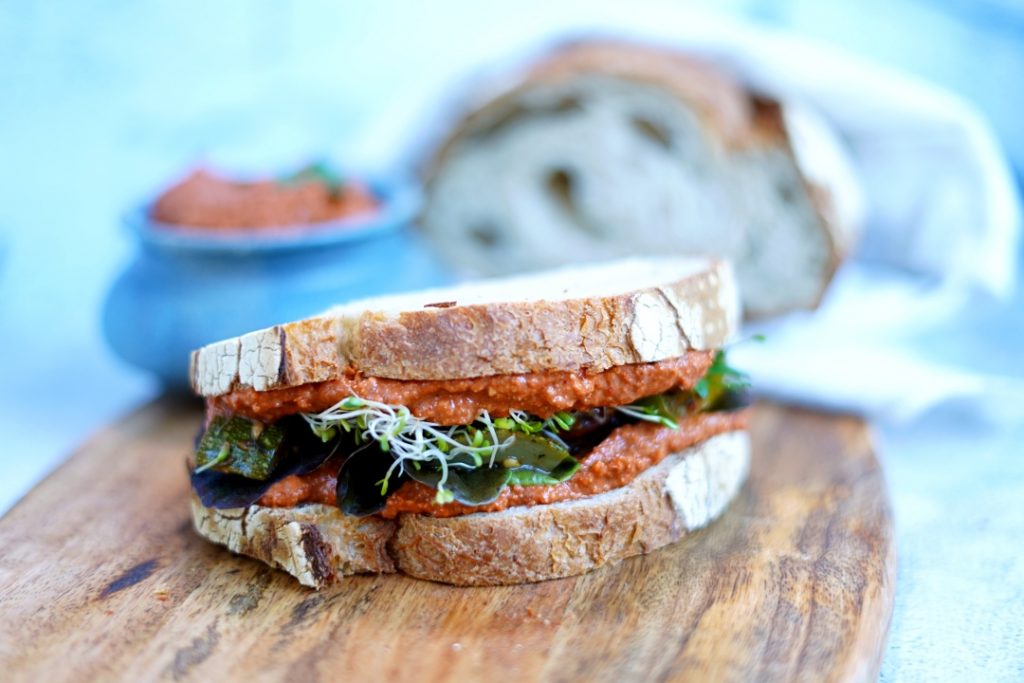
Lunch/Dinner
- Salads
- Fried rice with vegetables
- Curries of beans or lentils
- Puree soups
- Air-fried potatoes with dip
- Tacos
- Pasta with vegan sauces
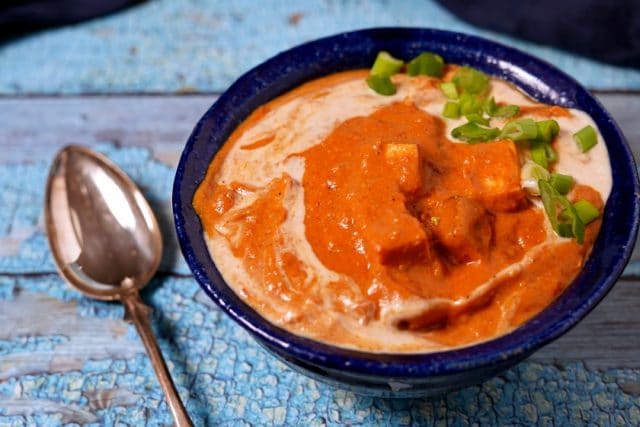
Snacks
- Fruits
- Carrot sticks
- Oil-free potato chips
- Nuts and seeds
- Date balls
- Oat bars
- Smoothies
- Plant-based yogurt
Desserts
- Fruit
- Berries
- Avocado chocolate mousse
- Cakes sweetened with bananas, applesauce, or date paste.
- Date balls
- Dark chocolate
- Raw cakes

Books to read about nutrition and health
- How Not To Die- Michael Greger, Gene Stone
- How Not To Diet- Michael Greger
- The China Study- T.Colin Campbell, Thomas M Campbell
- Prevent and Reverse Heart Disease- Caldwell B.Esselstyn
- The Starch Solution- John A. McDougall
- Eat for Life-Joel Fuhrman
- The Cheese Trap-Neal Barnard
- The Plant-Based Solution-Joel K. Kahn
My recipe book recommendations
- How Not To Diet cookbook
- Plant-Based on a Budget
- The Plant-Based diet for Beginners
- Plants Only Kitchen
- Oh She Glows Cookbook
- BOSH Heathy Vegan
- No Meat Athlete Cookbook
- Love and Lemons Everydaymeals for a Plant-Based Diet
- The Budget-Friendly Vegan Cookbook
- Healthy Vegan, Happy body
- Vegetable Kingdom: The Abundant World of Vegan Recipes
- sustainable Kitchen
Best youtube nutrition channels
- Nutritionfacts.org
- Center for Nutrition Studies
- Physicians Committee
- The Real Truth About Health
- Plant-Based News
- Forks Over Knives
- Chef AJ-interviews with docs etc
Weightloss channels
- High Carb Hannah
- Plantiful Kiki
- Ryan Adams-Natural Weightloss Mastery
- Chelsea Mae
- Melissa Alexandria
- Healthy Emmie
Recipe channels
- Jane Esselstyn
- Rainbow plant life
- Alexandra Andersson
- Simnett Nutrition
- The Whole Food Plant-Based Cooking Show
- Plant Based Gabriel
Documentaries that you can watch about a plant-based diet
- What the Health
- The Game Changers
- Plant Pure Nation
- Forks over Knives
- Cowspiracy
- Planeat
- Earthlings
- Eating you Alive
Plant-based doctors to follow
- Michael Greger
- Dr. Joel Fuhrman
- T. Colin Campbell
- Thomas Campbell
- John A. McDougall
- Craig McDougall
- Dr. Michael Klaper
- Kim A. Williams
- Caldwell Esselstyn
- Dean Ornish
- Angie Sadeghi
- Neal Barnard
- Dean and Ayesha Sherzai
- Brooke Goldner
- Joel Kahn
- Alan Goldhamer
- Garth Davis
- Pamela A. Popper
- Doug Lisle
- Robert Ostfeld
- Milton Mills
- Linda Carney
- Wayne Dysinger
- Neil Nedley
- Michael Hollie
- Hans Diehl
- Mauricio Gonzalez
- Harriet Davis
- Danielle Belardo
- Michelle McMacken
- Jaimela Dulaney
- Saray Stancic
- Baxter Montgomery
- H. Robert Silverstein
- Jeff Novick, dietitian
- Arjun and Shobna Rayapudi
- Terry Shintani
- Ron Weiss
- Stephen Gundry
- David Katz
- Will Busiewicz

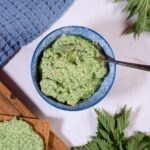
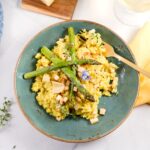
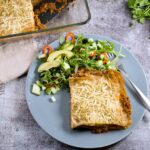
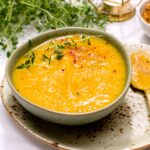
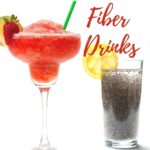


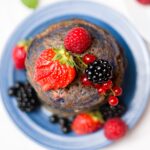
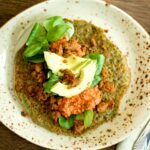
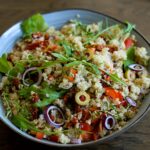
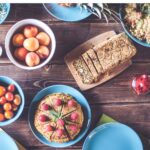
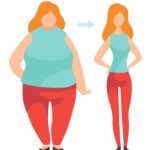
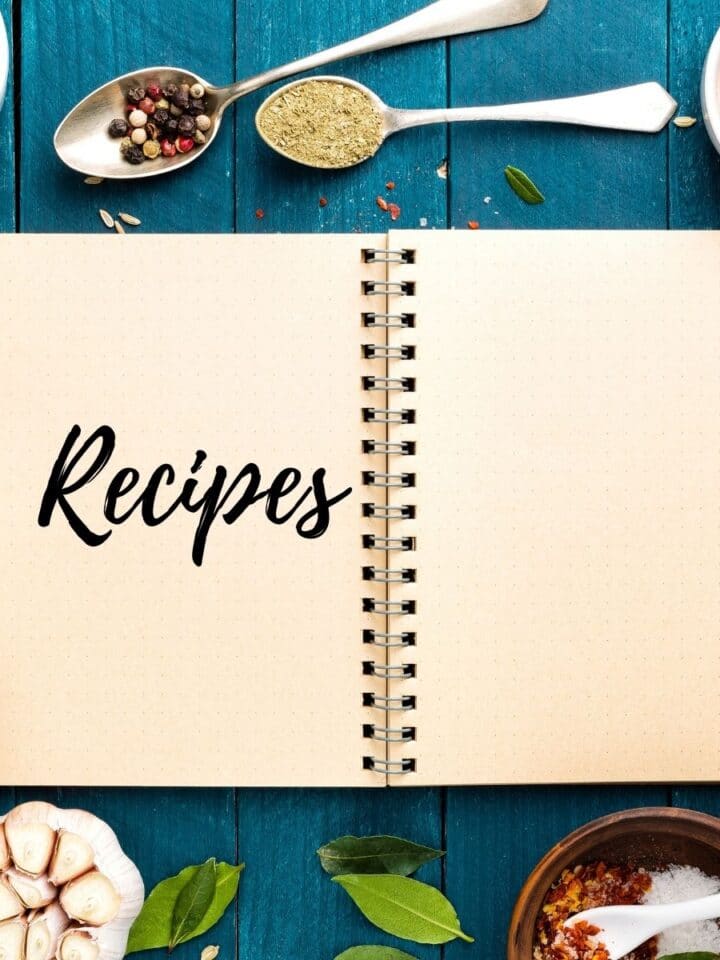
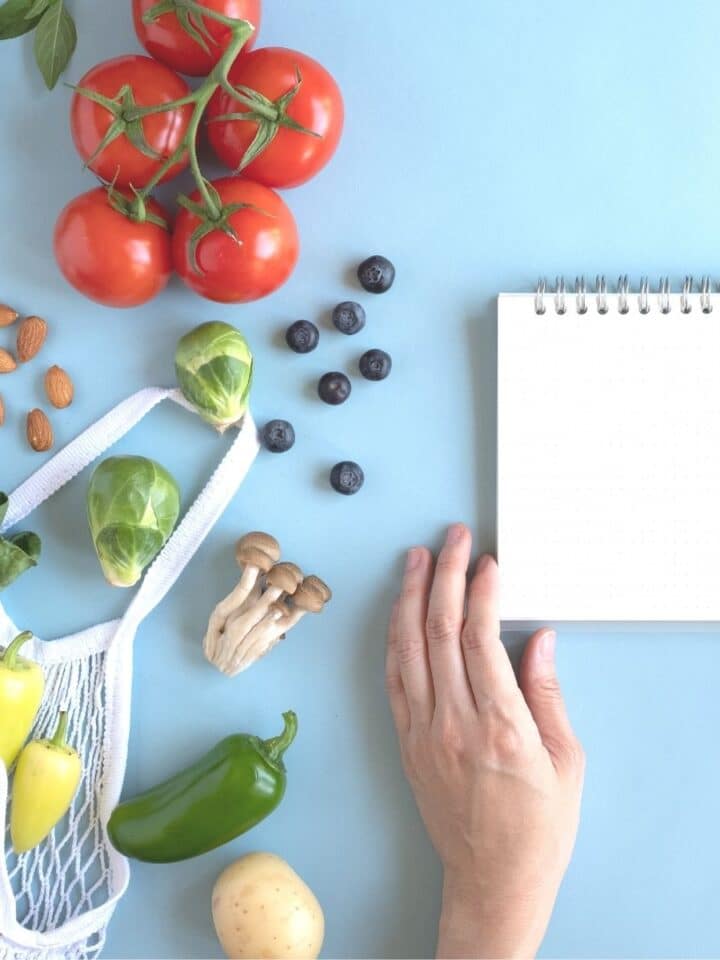
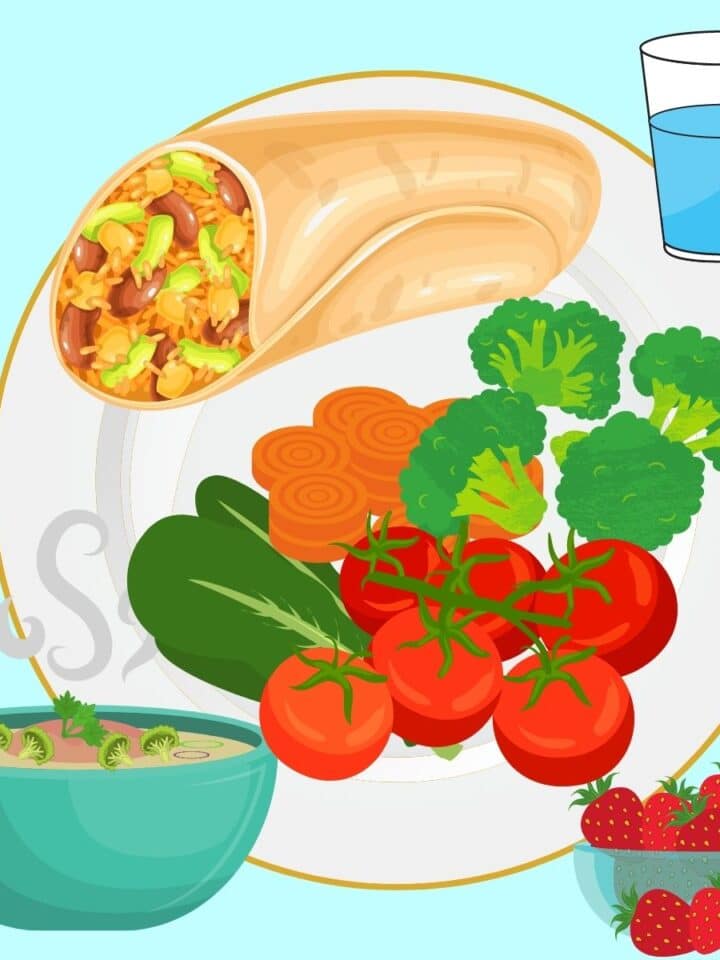
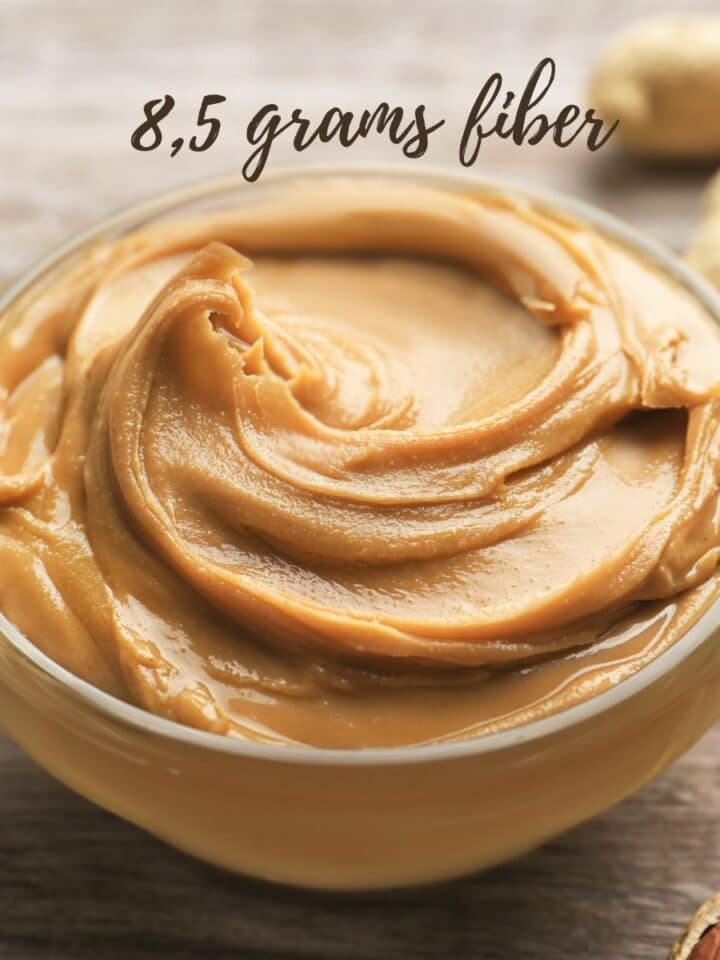
Jim Beerstecher
Wow! What a wonderful, life-saving page you've put together! Thanks for helping so many folks get started. I could have saved a ton of hunting under rocks around the internet trying to get info if I'd had this, first! But, either way, my life is now a miracle of recovery, eating how I was designed to eat. Thanks! I'm gonna share with with my WFPB Beginners FB Group, too. And, I've already bookmarked it to dig deeper into it and to refresh my memory. Thanks so very much! - Jim B